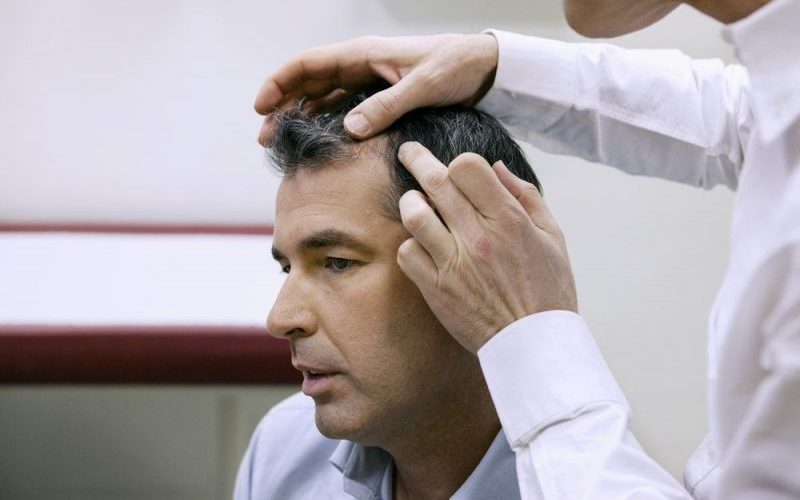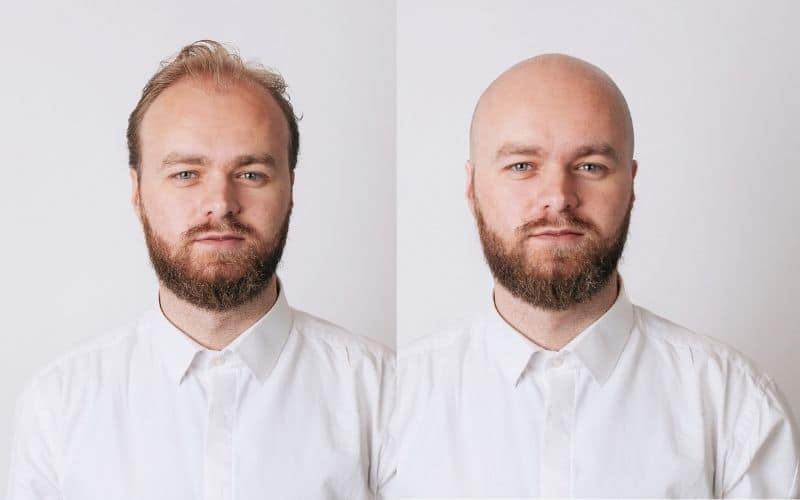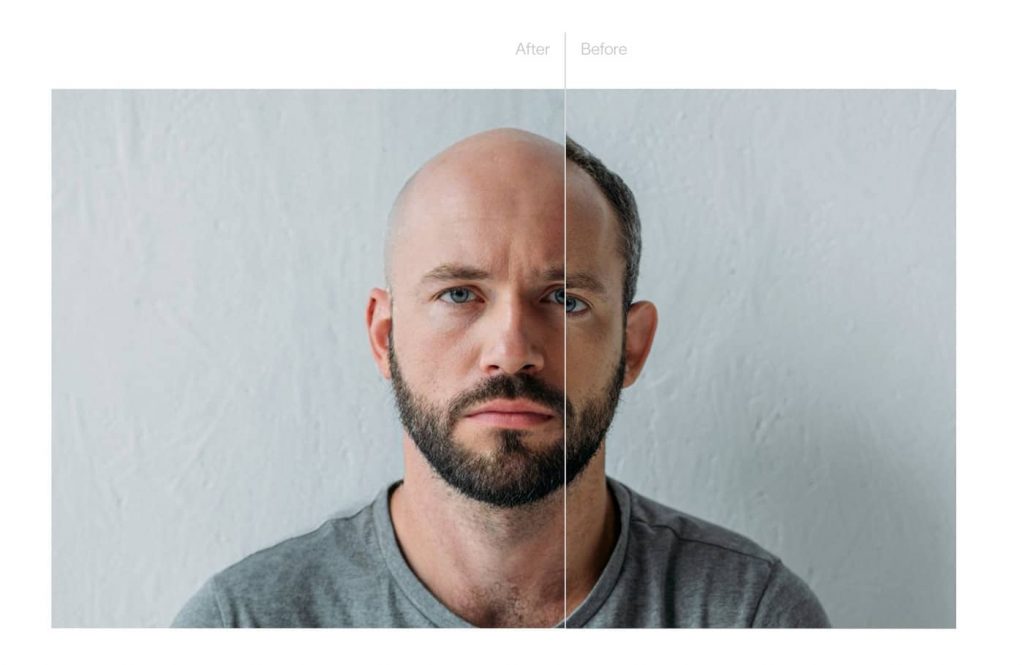Telogen Effluvium is a type of temporary hair loss brought on by trauma. It is treatable and reversible with many different causes linked to the condition.
Hair loss can occur due to stress, hormonal changes or even diet. According to dermatologists, Telogen effluvium is the second most common type of hair loss they see.
More research needs to be done surrounding it’s causes but here’s what we know so far.
Understanding hair growth
In a previous article about the causes of hair loss, The Bald Company speaks briefly about the three stages of hair growth. It’s important to understand this cycle to fully understand the way our hair follicles operate.
What are the three stages of hair loss?
Hair growth is split into three phases: anagen, catagen, and telogen:
The Anagen phase:
is the growth phase. Hairs divide and conquer, encouraged by constant blood supply from the root. Roughly 80-90% of hair will be in this phase and it lasts for about 2-7 years. The longer it stays in this phase, the longer the hair will grow, but this will depend on age, genetics, health etc.
The Catagen phase:
This phase is known as a short transition between the two main events. It signals the end of the active growth of a hair as hair follicles detach from their blood supply. This phase prepares the follicles for evacuation. Hair won’t stay in this phase longer than 2-3 weeks.
The Telogen phase:
And lastly, the resting & shedding phase. The hairs lie dormant for 1 to 4 months in the root while new hairs grow beneath them. 10-20% of hairs will be in this phase. The resting hairs will soon be pushed out of the follicle to make way for the newer hairs and the cycle repeats.
All hairs will be in different growth stages, which should result in even shedding which is completely natural. But if you start to notice more hair loss than normal, then it would usually be either male/female pattern baldness or telogen effluvium.
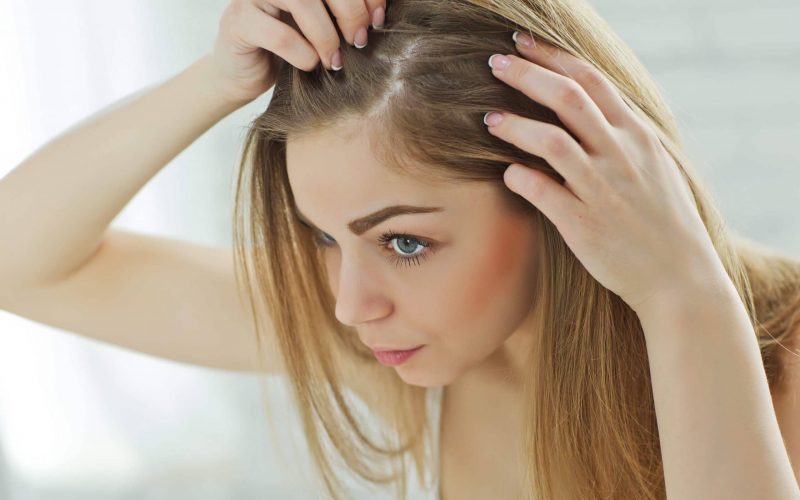
How does Telogen Effluvium occur?
Telogen Effluvium occurs when hair follicles are forced into the resting phase prematurely, causing hair follicles to fall early. The blood supply may then fail to re-attach itself to the hair follicle which halts new growth and leaves more hair strands lying dominant. More hair will then be noticeably falling out, with no hairs growing in it’s place.
What are the symptoms of Telogen Effluvium?
How long does Telogen Effluvium last?
This condition usually resolves on its own in a couple of months. The average time people experience TE is 100 days but up to 6 months. It depends on what caused your hair to go through this in the first place, as some people may take up to a year or even 18 months to get their hair back to normal.
What causes Telogen Effluvium?
Unlike with male/female pattern baldness, genetics do not play a role in Telogen Effluvium. Instead, causes are more linked to a persons external environment and hormonal/emotional changes to their body. Let’s explain more.
Trauma
TE hair loss could be linked to a certain event that causes your body significant trauma. This could be a major accident, losing a loved one or surgery and generally isn’t related to everyday stress.
Extreme trauma will send the body into shock and hair follicles into the resting phase as a defence mechanism. This action means your blood can focus its efforts on your healing, which is kind of thoughtful, don’t you think?
Due to the telogen phase usually occurring over a period of a few months, you won’t notice the hair loss straight away. But if your condition stabilises, the growth phase can start up again fairly quickly. Usually hair will return back to normal within 6-12 months.
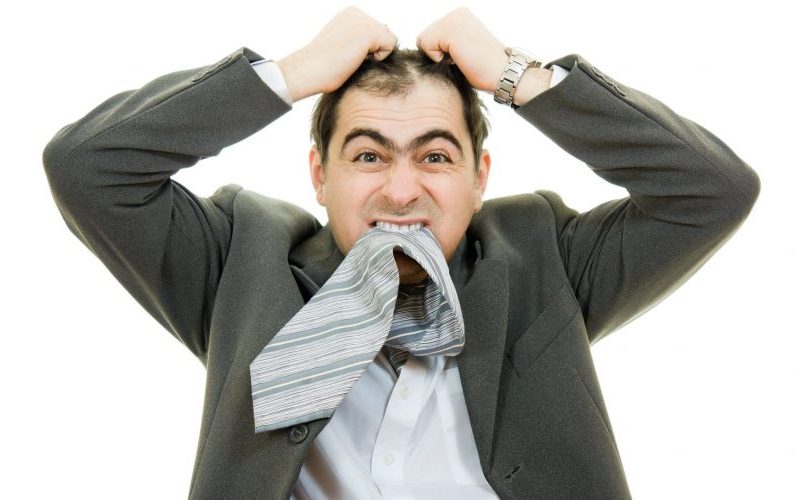
Medications
There are a plethora of drugs that list hair loss as a common side effect. This happens because certain chemicals in medications interfere with the natural hair growth cycle. Noticeable signs will appear within 2-4 months.
Some medications that have been known to cause hair loss include medications for acne(containing retinoids), antidepressants, birth control, blood pressure, cholesterol, hormone replacements, steroids and more.
It’s always best to ask your doctor about possible side effects when starting on new medication.
This type of hair loss will mostly grow back once you stop taking the medication but speak to your doctor if you have concerns. If hair doesn’t start to grow back you may need to take finasteride or minoxidil to promote new growth.
Hormones
Hormonal hair loss tends to affect more women than men due to the extreme changes womens bodies will go through throughout their life. Fluctuations of hormones can also force the hair into the resting phase early and for longer periods of time.
Postpartum hair loss is one of the most common types of hair loss in women and will affect 40-50% of new mothers.
Women may also experience hair loss when going through menopause. It’s estimated 70% of women over 70 will experience hair loss at some stage. This is due to a hormone imbalance as oestrogen and progesterone levels drop. These hormones help the hair grow for longer so noticeable hair thinning and fall out is common.
Why do women lose hair after prengancy?
During pregnancy, your hormones levels rise dramatically. One of the main hormones associated with this increase is estrogen. Higher blood volume and circulation mixed with higher levels of estrogen prevents your natural rate of hair loss.
Immediately after birth, your hormone levels drop to their pre-pregnancy levels and so all of this build up of hair that hasn’t naturally shed, will start falling at a higher volume. The fallout can start pretty much straight away and last up to a year, with it peaking around the 4 month mark (which is the natural cycle length of the Telogen phase).
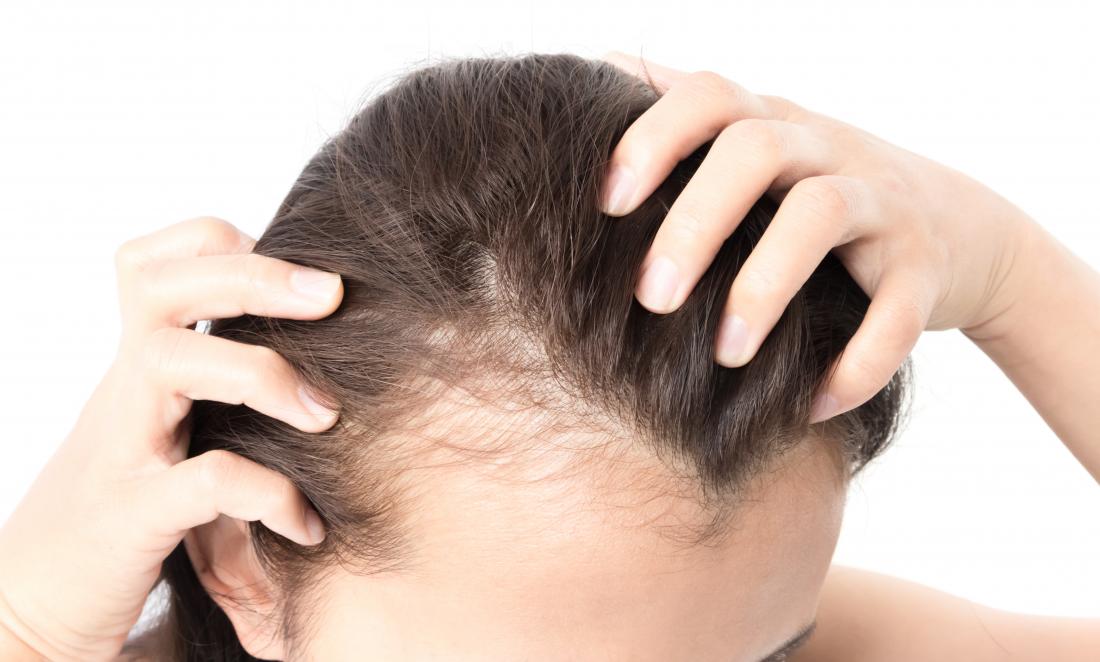
Diet
When your body doesn’t get the nutrients it needs from your diet, it can cause your body to react in certain ways and hair loss can be a side effect of this. Protein is essential for hair growth and health so a lack of this could cause or contribute to TE.
Vitamin or mineral deficiencies in iron, zinc, vitam B-6 & B-12 especially could have an impact on your hairs natural cycle.
What other circumstances cause hair loss?
Severe and prolonged thyroid disorders can also cause TE, but should go away after successful treatment.
Anemia is a condition which affects your healthy blood supply and TE is listed as a symptom.
If you are noticing thinning at the crown of your head, a receding hair line or both, you could be suffering from androgenic alopecia or male/female pattern baldness.
What is Chronic Telogen Effluvium?
If you have all of the above signs and symptoms that last well past a year, then it may have turned into a chronic condition.
This can happen continuously or intermittently for long periods of time due to the hair cycle repeating itself over and over again instead of going back to normal.
TE does not cause complete baldness, although it may unmask a genetic tendency to balding i.e. female pattern hair loss or male pattern hair loss.
What are the best treatments for Telogen Effluvian?
Treatments for TE will really depend on the reason you have the condition in the first place. A lot of small lifestyle changes may help or some over the counter supplements/medications.
Healthy and nutritious diet
A healthy diet is good for anyone, but particularly if you are suffering from a condition such as TE.
A high protein diet can really help, as protein is essential for hair health as mentioned before.
Also important is a diet rich in iron, zinc and vitamins B-6 & 12.
Foods which contain all of these and more include unprocessed red meat, legumes (chickpeas, lentils, beans), eggs, nuts, seeds (flax, hemp, pumpkin or sesame are best), grains and leafy green vegetables like spinach. Don’t forget to add vitamin C through fruits into your diet to help absorb the iron.

What foods promote hair growth?
There are a number of foods that can promote hair growth if a lack of nutrients is contributing to your hair loss. Hair follicles are made up of a protein called keratin, and these foods will help with nourishing, maintaining and sometimes promoting new hair growth.
Eggs are a great source of protein and biotin which are both important in keratin production.
Berries are loaded with vitamin C which helps prevent damage through collagen production.
Spinach and other leafy greens have a lot of beneficial nutrients and vitamins. It helps the hair and scalp as well as providing you with much needed iron.
Fatty fish like salmon and herring include omega-3 fatty acid which aid in hair growth.
Sweet potatoes contain a lot of Vitamin A to help with sebum production. This keeps hair healthy and promotes growth.
Avocado’s are Vitamin E rich, protecting the skin and hair follicles.
Avoid dying & heat styling
This sort of activity causes the hair more stress and damage that hinders regrowth.
Ask a pharmacist
There are a lot of over the counter treatments that don’t require a visit to the doctor and could help stimulate new or faster hair growth.
Reduce stress levels
If trauma is the main reason for your hair loss, finding ways to alleviate stress such as exercise, yoga, meditation, reading and journaling can help get your natural hormones back in balance.
Wait
Most of the time, TE will resolve on it’s own once your internal & external environment is back to normal. In the mean time, research ways to style your hair that will make hair appear fuller.
Conclusion
Telogen Effluvium is a very common hair loss condition that will affect many people for a variety of different reasons. The great thing to remember is it is mostly temporary and reversible. To treat it, remember that improving your general health will ultimately improve the health of your hair as well.

